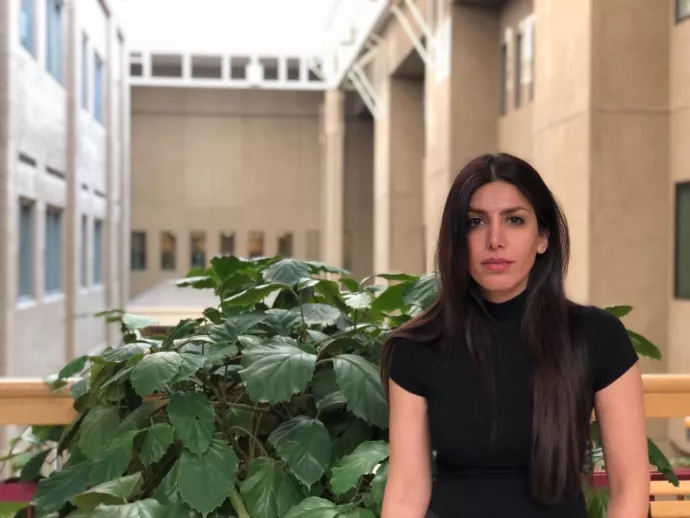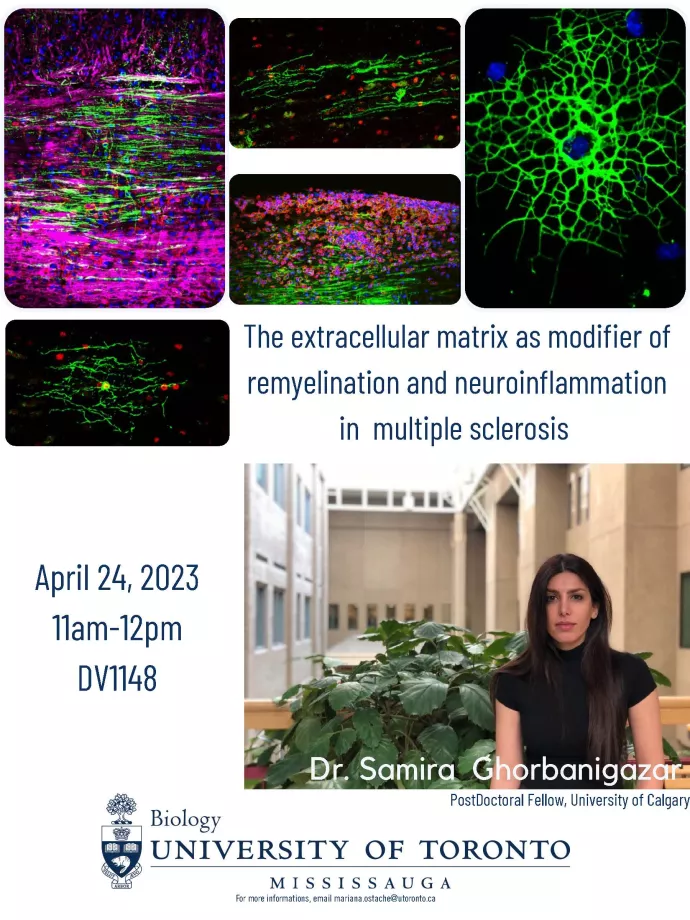
Invite to Dr. Samira Ghorbanigazar' Seminar, April 24, 2023
You are invited to Dr. Samira Ghorbanigazar’ Seminar, on April 24, 2023 from 11am-12pm, in DV1148.
Dr. Ghorbanigazar is a Postdoctoral fellowship at University of Calgary.
The extracellular matrix as modifier of remyelination and neuroinflammation in multiple sclerosis
Abstract
Multiple sclerosis (MS) is an inflammatory and neurodegenerative disease of the central nervous system (CNS) characterized by infiltration of autoreactive lymphocytes followed by loss of myelin, oligodendrocytes, and axons. Remyelination is a neuroprotective repair response to myelin loss that decreases the vulnerability of axons to irreversible degeneration. Remyelination is a highly efficient process that occurs extensively at early stages of MS, but it eventually fails. The failed repair process is contributed by ongoing toxic neuroinflammation and presence of inhibitors including extracellular matrix (ECM) molecules that prevent recruitment and/or differentiation of oligodendrocyte progenitor cells (OPCs) into myelinating oligodendrocytes. My postdoctoral research seeks to overcome ECM inhibitors in MS lesions to enhance remyelination. I discovered 2 highly upregulated ECM members in MS lesions; versican-V1 and fibulin-2 (FBLN2). Versican-V1 hinders remyelination directly by inhibiting attachment of OPCs and their maturation to oligodendrocytes, and indirectly by promoting cytotoxic T helper 17 neuroinflammation. FBLN2 does not impair initial adhesion of OPCs but kill them when cells are maturing through engaging the Notch signaling pathway. In vivo FBLN2 knockdown by adeno-associated viruses (AAV)-mediated CRISPR/Cas9, or by using genetically-deficient FBLN2 mice promotes oligodendrogenesis and remyelination in spinal cord lesions of MS models, correspondent with a better clinical recovery. Using single cell RNA sequencing, we found that remyelination-associated pathways are enriched in oligodendrocytes from FBLN2 deficient mice following injury. Overall, our findings implicate versican-V1 and FBLN2 as ECM inhibitors of oligodendrogenesis and myelin repair through engaging different pathways. Overcoming these inhibitors has the therapeutic potential to improve remyelination and prognosis in MS.
Brief Biography
As an undergraduate student, I got interested in immunology given the huge potential it has in bridging biomedical research and clinical applications. I decided to pursue an academic career in research to achieve my goal of becoming a biomedical scientist and developing new therapeutic strategies. During my PhD in immunology at Tehran University of Medical Science, I studied the role of microRNAs in immunopathogenesis of multiple sclerosis (MS). My interest in the field of MS led me to pursue a postdoctoral fellowship with the internationally acclaimed MS researcher, Prof. Wee Yong, at University of Calgary. My postdoctoral research seeks to overcome inhibitors in MS lesions to enhance tissue repair and discover new therapeutics for progressive MS.

